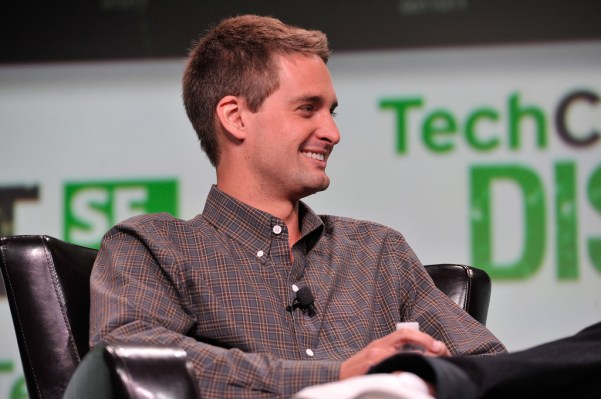Update: Apologies. I’d written today a breezy story titled: “Snap’s Evan Spiegel is clinging to billionaire status by his fingernails.” I cited reporting that this remaining 86,657,812 shares are reportedly worth $1.07 billion at this point. What I failed to note — and a source close to the company has brought to my attention — is that those roughly 86 million shares are class A shares only. Spiegel also owns roughly 143.7 million class C shares and another 7.5 million class B shares to safely secure his status as someone worth well over $1 billion, despite the slide in Snap’s share price since its March IPO. Very sorry for the screw-up. The original story follows below.
It’s hard to fault someone for being barely a billionaire — a self-made one at that, who happens to be just 27 years old. Still, owing to the performance of Snap Inc.’s performance since its March IPO, such is the position of its cofounder and CEO, Evan Spiegel.
Spiegel was worth more than three times that amount just nine months ago, when the company made its splashy debut. Hailed initially as a triumph, Snap’s shares opened their first trading day at $24, soaring 41 percent out of the gate. Their price quickly began drifting south, however, as Instagram began more aggressively replicating the features that made Snapchat so popular.
Today, its shares trade at just less than $13 each, giving the company a market cap of $15.6 billion, down from a peak valuation of $31 billion.
What does it really matter? Not much if Snap’s plans to reinvigorate its business can gain solid footing.
As you may have read in TC earlier this month, the company is reversing its stance on several key things. One of them will be to embrace social media influencers, rather than shun them, as was previously the case. Snap had also focused primarily on first-world countries where high-bandwidth video is readily accessible, largely abandoned developing countries. But after missing revenue expectations by $30 million in the third quarter, Spiegel acknowledged on the company’s earnings call that “[Snap needs] to accelerate the adoption of our product among Android users . . . and users in the rest-of-the-world markets.”
Not last the company says it’s prepared to work harder to attract users above the age of 34, a segment to which it was not catering earlier.
Snap is also doing more to squeeze revenue out of its users, only 4.5 million who were new to the company in the last quarter. (That amounts to less than three percent user growth quarter over quarter.)
As our colleague Josh Constine reported a couple of days ago, for example, Snapchat is looking to win over more businesses with immersive new ads formats. One, called Promoted Stories, strings together multiple Snaps into a longer-form slideshows that can be opened from a tile on the Stories page. A separate initiative, called Augmented Reality Trial ads, allows people to play with an AR version of a product overlaid on the scene surrounding them.
Only time will tell if these initiatives make the kind of impact that Spiegel hopes they will.
In the meantime, he may have to make do with less. Though he and cofounder Bobby Murphy reportedly sold shares worth $272 million apiece at the time of Snap’s IPO and he has continued to make regularly scheduled stock sales (he sold 1.65 million shares on November 9th at an average price of $12.42, for a total transaction of roughly $20.5 million), his remaining 86,657,812 shares are reportedly worth — eek — $1.07 billion at this point.
On the day of Snap’s IPO, they were worth nearly $3.6 billion.
